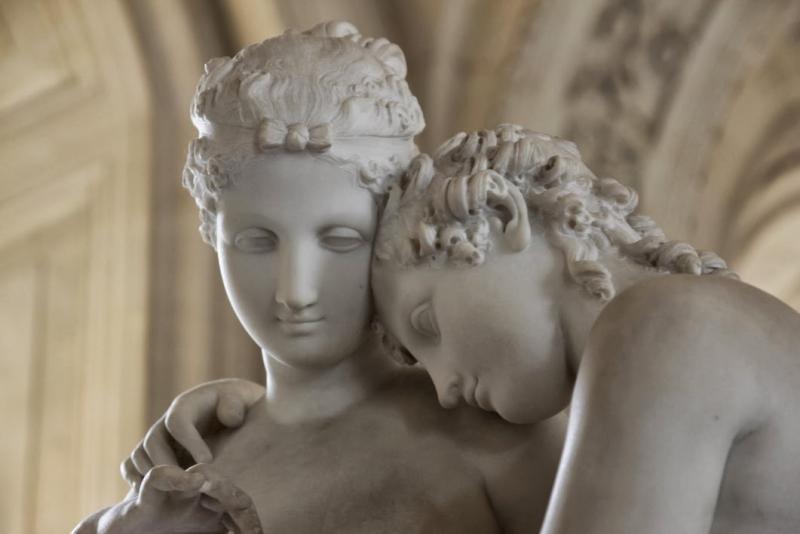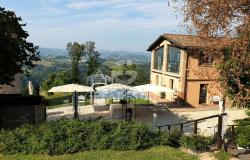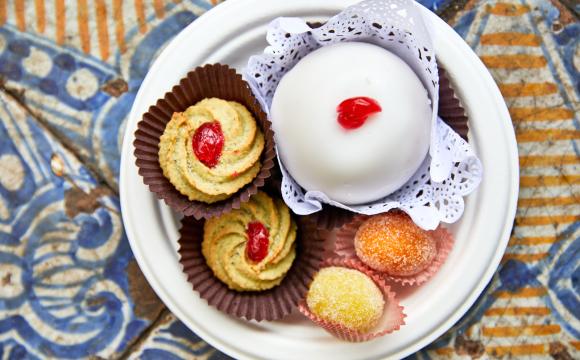This is a mouth-watering winter for Italy-bound art lovers. The season’s calendar is packed full with interesting events covering all the most important eras and movements from the Roman period to contemporary art.
If only you could hop from city to city, you could take in L’Artista Viaggiatore, which explores the link between travel and art in the works of artists such as Gauguin, Klee, Matisse and De Chirico, in Ravenna; Richard Avedon’s hitherto undiscovered photographs of Harper’s model Ann Theophane Graham in Rome; and a century’s artistic interpretation of the kiss theme, from Hayez and Medardo Rosso to De Chirico and Manzù, in Pavia.
Time (and money) being limited, however, you may only be able to visit a few exhibition. If so, we have picked three you absolutely should not miss. Having to be ruthless in our selection, we have focused only on Italian art, selecting exhibitions that explore three different periods of the country’s vast artistic heritage.
I Della Robbia, Il dialogo tra le Arti nel Rinascimento, Arezzo.

Graceful figures stand brilliantly white against a gleaming blue background in a leaf and lemon-embroidered roundel. The sculptures alone spell Della Robbia, but the choice of colours and, most of all, their extraordinary lustre, confirm it.
Few artworks are more distinctive than the enamelled terracotta pieces by the Della Robbia workshop. Renaissance pioneer Luca Della Robbia created a new technique to glaze terracotta that made it both durable and dazzling, and built his family’s fortune for three generations—his nephew Andrea and grandnephew Giovanni also worked in the business.
Their glazing method was a jealously guarded secret and, for years, other artists wondered how the Della Robbias managed to impart such shine to the roundels and lunettes that graced many buildings and churches across Florence.
Now, a new exhibition at the Museo Statale d’Arte Medievale e Moderna di Arezzo explores the development of the Della Robbia technique—borne of the clever intuition that the tin enamel glazing used for majolica pots could be applied successfully to terracotta sculptures—in the context of the Renaissance art explosion.
So the family’s terracottas will be displayed alongside works by Donatello, Ghiberti, Andrea del Verrocchio, Pisanello, Filippo Lippi, Pollaiolo, Ghirlandaio and Perugino, among others.
But there’s more: since many of the Della Robbia roundels and lunettes are integral part of Tuscan buildings, the exhibition also recommends five outdoor itineraries in Arezzo, Casentino, Valdichiana, Valdarno and Valtiberina to discover lesser known pieces from the family workshop.
I Della Robbia, Il dialogo tra le Arti nel Rinascimento, Arezzo runs from 21 February to 7 June at the Museo Statale d’Arte Medievale e Moderna, via San Lorentino 8, Arezzo, from 9am to 7pm daily. Admissions €10, concessions €7 (+39 049 2010067, www.mostradellarobbia.it).
Canova, L’ideale Classico tra la scultura e la pittura, Forlì.

The new Phidias, the Pygmalion who made Napoleon’s sister an immortal beauty, “a unique man and truly divine” (at least according to contemporary reviewer Pietro Giordani). Antonio Canova is a pillar Italy’s Neo-Classicism and the country’s greatest sculptor after the Renaissance master.
As befits such a great artist, Canova’s sculptures have been extensively displayed in the past, but this new exhibition gives them a new perspective.
Building upon new research, it explores the Neo-Classical sculptor’s work not only in the traditional context of Classical inspiration but also against the backdrop of paintings and art by his contemporaries.
So his sculpture of the repenting Magdalene is displayed alongside Hayez’s painting on the same theme. His Hebe is compared to both the ancient Ariadne on the Panther and the Tivoli Dancer, but also with that Renaissance masterpiece that is Giambologna’s Mercury.
Beyond that, however, the exhibition, which retraces the whole career of the Treviso-born artist, is a celebration of beauty caught in marble, plaster and paper. As poet Ugo Foscolo once said of Canova’s Venus, his art “creates the illusion of Paradise in this valley of tears.”
Canova, L’ideale Classico tra la scultura e la pittura takes place at Forlì’s Musei San Domenico, in Piazza Guido da Montefeltro, until 21 June. Open Tuesday to Friday 9.30-7pm, Saturday and Sunday 9.30am-8pm. Admissions €9, concessions €6. Entries are staggered to avoid crowds, so booking is recommended (+39 02 43 35 35 25, www.mostracanova.eu).
Futurismo 1909-2009. Velocità + Arte + Azione, Milan.
 This year sees the centenary of Futurism, the early 20th century Italian art movement that broke with the old to celebrate technology, speed and man’s triumph over nature.
This year sees the centenary of Futurism, the early 20th century Italian art movement that broke with the old to celebrate technology, speed and man’s triumph over nature.
Started by writer Filippo Tommaso Marinetti, it was a sweeping revolution that touched anything from fashion to gastronomy, but found a particularly vivid expression in visual art.
Futurist painters and sculptors, such as Umberto Boccioni, Giacomo Balla and Carlo Carrà, loathed “that spineless worshipping of old canvases, statues and bric-a-brac,” preferring instead to pursue dynamism, motion and emotion.
If their techniques were heavily influenced by Divisionism and Cubism, their themes were altogether innovative—urban settings, work scenes, and a violent passion for war, militarism and patriotism.
Futurism didn’t last long—begun in 1909, it declined dramatically with First World War and came to an end in the 1930s—but, in those few years, it radically changed Italian art.
Throughout 2009, a flurry of exhibitions will investigate the movement’s origins, development and impact. Among those, the most exhaustive one will take place at Palazzo Reale in Milan—an apt setting, seen as the city was the birthplace of Futurism.
Futurismo 1909-2009 will showcase more than 400 works by artists such as Boccioni, Carrà, Russolo, Balla, Severini, Prampolini and Soffici. Exhibits will span from paintings and sculptures to fashion, furniture and even theatre costumes, in a bid to portray Futurism’s pervasive philosophy and wide-ranging influence.
A room devoted to Lombardy’s late 19th century art will explore the movement’s historic roots, while others will reveal how Futurist ideas affected artistic expression in later years.
Futurismo 1909-2009. Velocità + Arte + Azione takes place at Milan’s Palazzo Reale, in Piazza Duomo 1, from 6 February to 7 June. Open Tuesday to Wednesday 9.30am-7.30pm, Monday 2.30pm-7.30pm, Thursday 9.30am-10.30pm and Friday, 9.30am-7.30pm. Admissions €9, concessions €7.5 (+39 02 54919 www.futurismo.milano.it).
And finally, a quirky one to consider.

This is not so much an exhibition as a homage to one of Italy’s greatest songwriters. Through multimedia installations, Fabrizio De Andrè’s extraordinary music becomes the soundtrack to interpret current events. Interactive ‘tables’ provide the historic and cultural context for each song, while a special room is devoted to the characters that the Genoese artist created in his vast production—the hapless Bombarolo, the tragic figure of Marinella, Boccadirosa’s freedom from stifling moral constraints. A must for anyone who was ever moved by De Andrè’s songs. At Genoa’s Palazzo Ducale until 27 February 2009, from 9am to 11pm. Admissions €8, concessions €6.






